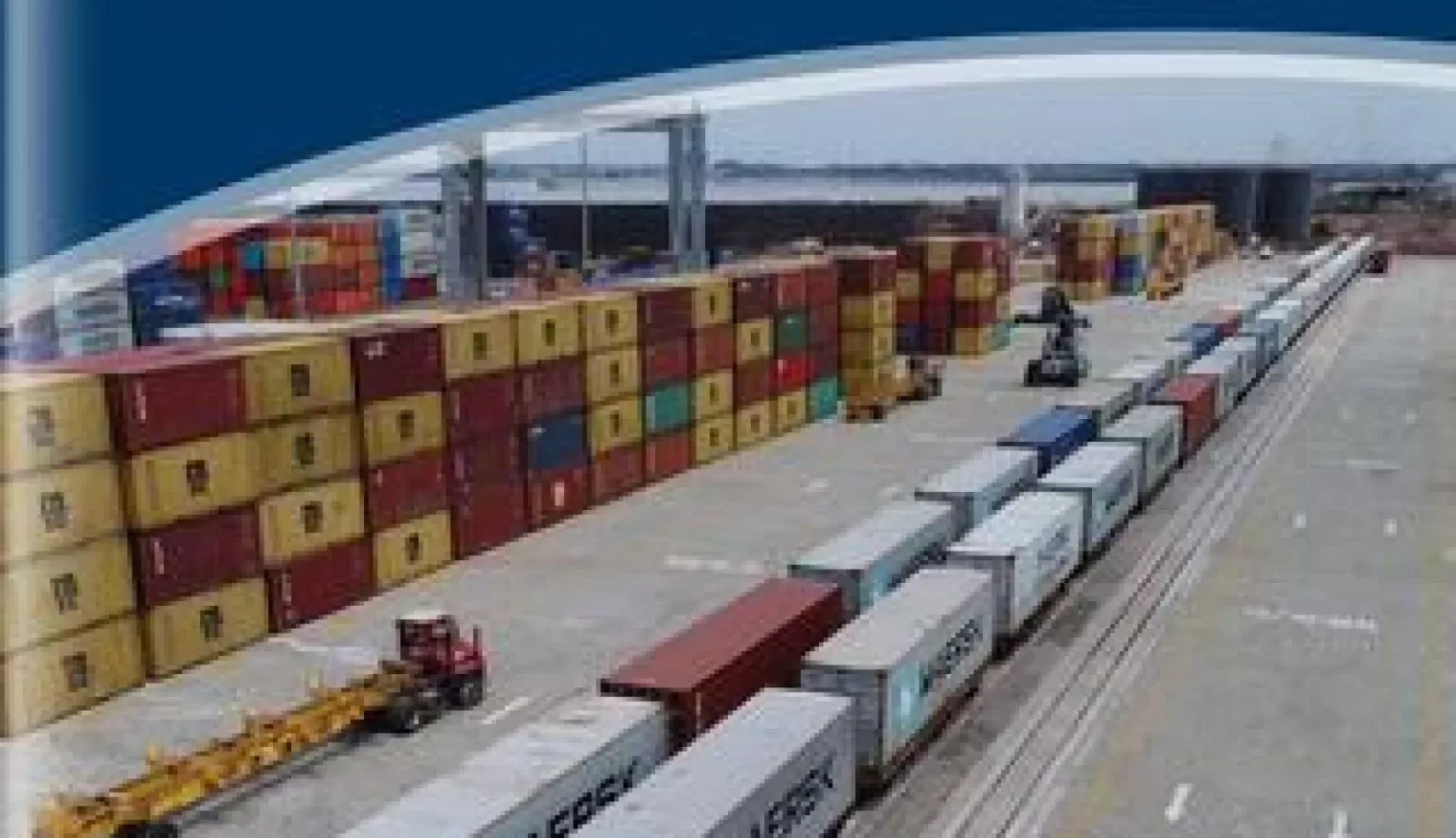THE GATEWAY
Nataraj continues: “We feel this is incredibly important when it comes to the economic development of the region, predominantly as the region should not have to fall prey to the cost of inefficiency due to a lack of competitive alternatives.
“The new upgrade to our container facility, alongside the dredging of its approach channel, quays and turning basins, will provide trade with another gateway and wider access to markets that include China, the east coast of the US, the Mediterranean and the Middle East.”
REGAINING STATUS
With thanks to a successful combination of investments, the container terminal operated by DP World is set to regain its status as a major container port.
“Our current target is to rapidly ramp-up our capacity to one million twenty-foot equivalent unit (TEU) per year,” explains Nataraj. “We will do this steadily over the next few years in order to meet with the increasing market demand we are witnessing, all of which is made possible by the substantial investment in infrastructure, equipment and systems within the terminal.”
In addition to the phenomenal changes to the physical infrastructure of DP World’s container terminal, it is upgrading its Terminal Operating System (TOS) to replace the remaining physical paperwork systems with electronic processing.
“With thanks to our new operating system we will be able to substantially cut down on processing time and delays, while also dramatically improving the safety and security of the terminals employees, visitors and cargo,” affirms Nataraj. “On the operational side we have also invested in six new RTGs, all of which have already improved our productivity.
“We have recently completed our landside development, which completely refurbished the old terminal, added our new rail siding and 5ha of new yard. This has increased our terminal capacity from 150k TEU to 350k TEU per annum.”
It is estimated that by the end of 2019 the first phase of the Company’s quay development will be completed which includes the complete overhaul and dredging to 16m of 308m of quay with three new STS cranes being installed. Following this will be the extension of 400m of new quay.
“We are already active in our attempts to change the outdated perception of Maputo as being both a costly and logistical challenge,” adds Nataraj. “Now the Company is gradually collaborating with ‘prime movers’ that are happy to support the development of the Maputo-southern Africa corridor.
“I am confident that we will continue on in this vein to change perceptions and that Maputo will be able to establish itself as a truly viable alternative trade route.”
The challenges facing the movement of containerised cargo at present are not dissimilar to those that were faced when Maputo was first being promoted as a gateway for bulk-mineral exports.
“It took a lot of dedicated time and determination for all the relevant players to see the benefits that Maputo has to offer,” explains Nataraj. “Now bulk mineral exports at Maputo are a great success story, with cargo owners and shippers reaping the rewards of being part of a superior export link.”
PROGRESSIVE ATTITUDE
DP World Maputo’s port plans to have 600 reefer plugs in place by the next citrus season (April, 2018), making up a large part of its drive to bring citrus exports back to the port.
“Maputo is recognised as the natural geographical port to best serve the citrus industry in Mpumalanga and Limpopo,” adds Nataraj. “Our first step in achieving progress was to build the physical capacity to handle the industry via road, rail and the port, then going on to ensure that the exporters were being offered an attractive package.”
One of the hindrances that DP World has encountered is the historical perception that it is both costly and a logistical challenge for those trying to use it.
“We have decided to see this as an opportunity, rather than something that can act as a handicap to us,” adds Nataraj. “Now that we have developed the terminal’s infrastructure in order to support trade, cargo owners and shippers can now benefit from a geographically superior option and a terminal operator that is active in collaborative projects that will deliver mutual benefits to both parties.”
TACKLING FUTURE ISSUES
The opportunities available with thanks to the new Maputo corridor are abundant for all to see, however, the Company required the initial momentum to enable it to bring about substantial change.
Nataraj affirms: “We have already witnessed substantial change and an exponential increase in the interest amount of cross-border requests regarding the ability of Maputo to provide the long-awaited alternative option to that seen in Durban.”
Through its substantial investments, the Company has tackled potential border delay issues head-on. An example of this is the 1,500 metres of rail siding in the terminal which will eliminate border crossing delays, due to the fact that cargo is railed directly into the terminal operational area.
“We are working hard to ensure that our investments are going into the right places for our customers and the future of the port,” concludes Nataraj. “I hope that as we continue to grow at the rate we have experienced recently, with large volumes of cargo moving through the port, and I feel very optimistic for the future of DP World Maputo.”































